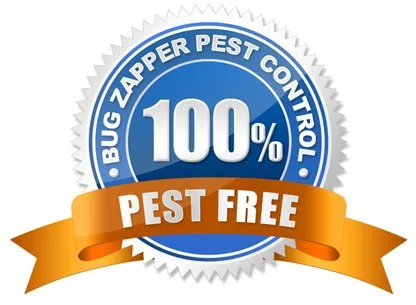
How to Remove a Beehive
If you have unwanted bees around your home, here’s
what our expert has to say on best practices to safely
remove a beehive.

Weston Gillbanks
Technician and North Manager
Service Region
Oregon west of the cascades
Specialties
Hymenoptera, specifically Bees and wasps
Vertebrates
Herbicides
Background and Training
Weston has been a beekeeper for 16yrs. He has a degree in animal science from OSU and is licensed in 5 ODA pest control categories.
The Importance of Bees
You might think a bee is just a bee, a flying insect that can sting you, a nuisance. But the reality is, we need bees. They’re amazing creatures and are critical to our environment as they pollinate food crops and flowering plants. Over 35% of the world’s food is directly dependent on bees. There are over 20,000 bee species in the world, with about 4,000 species in North America. But the number of bees is declining due to loss of habitats, pesticide exposure, and various pathogens and parasites.
When Would You Remove a Beehive?
If bees are so valuable, why would anyone want to remove a beehive or nest? While bees are necessary for our environment, they can be a nuisance around your home or office for a few reasons:
- Someone in your home is allergic to bees
- Carpenter bees can cause structural damage to your home
- You already raise bees
- They’re in an inconvenient location
- Increases the risk of additional hives
When it comes to honey bees, we encourage you to leave them be when possible or contact a local, experienced beekeeper to help relocate the hive.
Signs of a Bee Problem
You’ve noticed bees buzzing around, but do you have an infestation you should be concerned about? There are a few easy ways to determine if you have a bee problem:
- Excessive Number of Bees One of the first signs you have a problem is if you notice an excessive amount of bees around your property.
- Active Nest Another sign of a bee infestation is if you spot an active bee’s nest. Nests can be found in many places around your home such as:
- Tree holes
- Wall cavities
- Roof overhangs
- Damaged vents
- Openings around pipes
- Utility boxes
- Rodent burrows
- Dark Patches on Walls or Ceilings Dark patches could be a sign of honey bees nesting in walls or ceiling and producing honey.
- A buzzing sound from a wall, or bees emerging from vents or fans.
The sure-fire way to know if you have an infestation is by calling the professionals. They can easily determine if there’s a problem, locate the nest, and identify the type of bee, which is important in understanding the best method for removal or if removal is a good idea.
If they are a solitary bee, such as a mason bee, removing them is almost never necessary, with exception of carpenter bees. Solitary bees are not aggressive and don’t produce enough hive material to cause a problem. They are also generally only active for a few weeks out of the year.
Most bee species, including honey bees, are incredibly reluctant to sting. They die when they sting you, so it is their last resort for protecting themselves or their hives.
How to Remove a Beehive Without Killing Them
First and foremost, do not attempt to remove bees if you are not an experienced beekeeper. Working with bees takes skill to be safe for both the beekeeper and the bees.
Because bees are important insects, it’s encouraged to remove a beehive or nest without killing the bees. Depending on the type of bee, the hive will likely be able to be relocated. While we highly recommend leaving bee removal to the professionals for safety reasons, there are a few home remedies you can try for smaller infestations to drive them away such as smoke, garlic spray, citronella, or peppermint. These methods are not known to be effective the majority of the time, however it won’t hurt to try with the right safety precautions.
Simply killing the bees is very poor decision where removal is possible. Killing the bees will lead to more problems than if they had been left alone. The bees actively cool their hive in most situations, so killing them may result in the hive materials melting and causing damage to the structure. If this is not the case then one of 2 things will happen, either a new hive will move in, often within days but at the least the next swarming season, or secondary pests, such as ants, beetles, rodents, and larger mammals like possums or even bears, will take advantage of the abandoned hive materials. The secondary pests all pose a significant risk of damaging the structure, whereas a new colony of bees just puts you back at square one.
In order to remove the hive, a beekeeper will need to open up whatever space they are in and remove the hive materials and bees. Critically, after they are done all possible entrances within 10ft of the void they inhabited, as well as any entrances directly into the void, must be sealed up. If this is not completed a new hive of bees will move in either almost immediately or atleast at the next swarming season.
If you are experienced in handling bees and would like to try extracting a hive, the following may be useful tips from someone who has participated in the removal of over 100 hives.
First, assess the hive. Look at the rate of flow of bees in and out and think about the size of hive that would produce that at the current weather conditions. Looks for drones, the number of drones may help determine the maturity of the colony. Look for signs of ailments such as varroa mites, since the mite load on a swarm is very low this can help assess how long the hive has been there.
Next, determine the exact location of the hive. From the entrance, where are they going? Which void are they in and how big of an area do they inhabit, a stethoscope, bore camera, or IR camera may be useful to this end.
Determine the easiest method of access. What materials must be removed to get to the hive? How can they be removed for the easiest time sealing them back up afterwards? Make a detailed plan and plan for contingencies. Use drop clothes to limit any mess.
Wear a bee suit, even if they seem calm, this can change once they feel threatened. Once you’ve opened the hive, identify the location of their brood and what is simply food storage. Try to keep as much of their food with them as you can, have a food grade bucket with a lid ready for excess, but definitely make sure all their brood makes in into frames.
Keep your eye out for the queen, and try not to risk vacuuming her up or leaving her behind. You should know what she looks like and where to find her if you are sufficiently experienced to be attempting this. Catch her and use her to entice her workers into their new home.
Use a bee vacuum. They may be expensive, but are definitely worth it. If you have some carpentry skill they can also be built from a hive body, some ply wood, and some screen. Don’t use too powerful a vacuum, or incorporate a way to adjust the suction. You want it to just pull them in when they’re flying and be able to pull about half of them off a surface, too strong and the vacuum will kill them. Make sure there are no hard angles or tight turns in the vacuum or in the hose and make sure you have a way to shut them in. Also reunite them with their brood as soon as possible.
It is best to perform the extraction either late in the evening or early in the morning when the most bees are home and haven’t gone out to forage. If this isn’t possible, return with the vacuum that night or the next morning to collect the stragglers.
It’s important to thoroughly clean the area where the hive was to reduce the likelihood of a new swarm of bees deciding to build a hive in the same place later. Remove the nest and any dead bees. Be sure to seal up the structure to prevent a new swarm from moving in.
Should I Try to Remove Bees Myself?
When dealing with insect removal, it’s almost always best to leave it to the professionals. They’re pros for a reason! And when it comes to bees, our experts, like Weston, understand the importance of removing bees without harming them and how to do so properly. They are also able to identify the type of bee (or wasp or yellow jacket), develop a plan for removal, and have the proper equipment to get the job done right. So if you see a swarm, give us a call.
Get Help From Our Experts
“It went very well. They called the day before saying they would be here at a certain time and they were. Wasted no time starting and getting the job done and left. I would hire again and recommend them to friend and relatives.”
Our Pest-Free Guarantee
Satisfaction Guaranteed
We cheerfully offer a 100% guarantee on every service we provide!

Get answers to your pest question now! Call or Text Us.
AREAS WE SERVE


